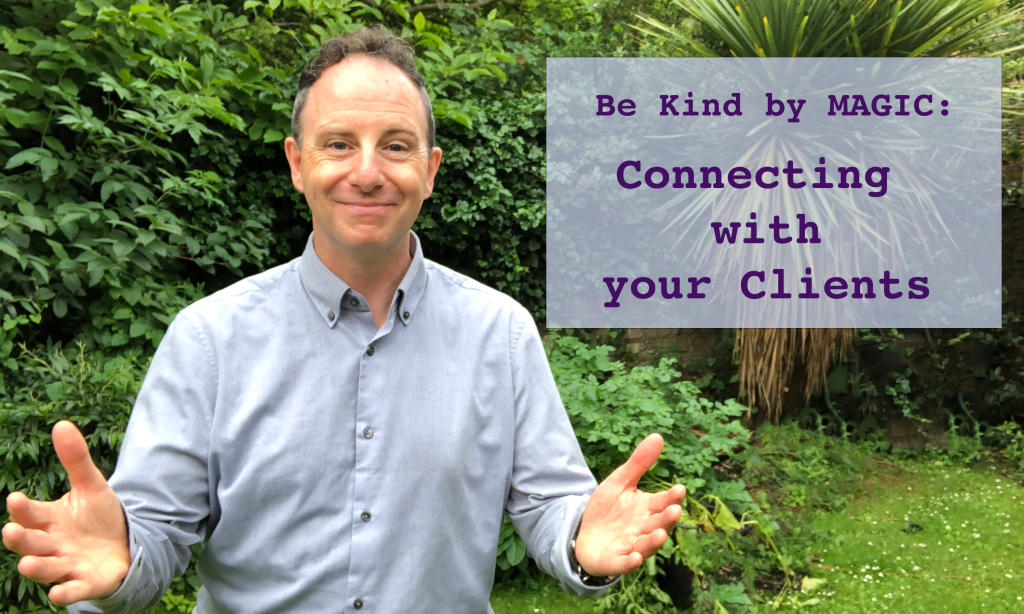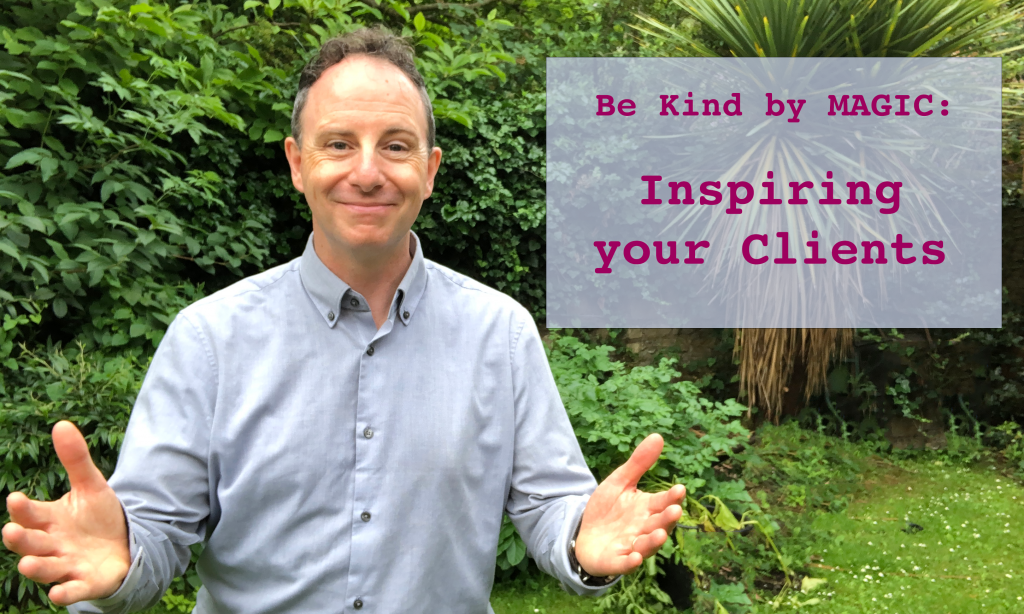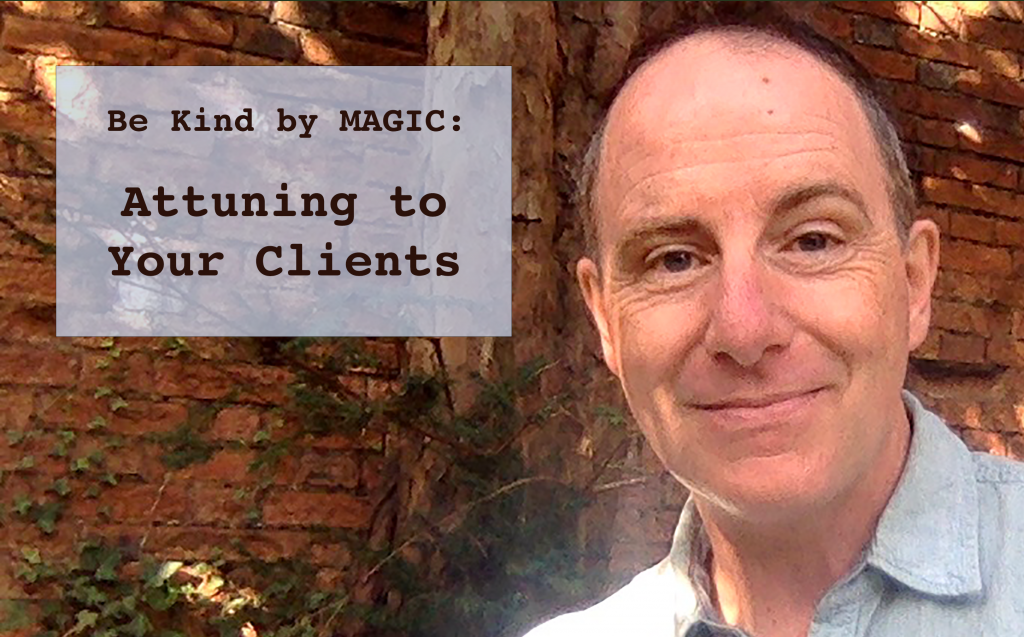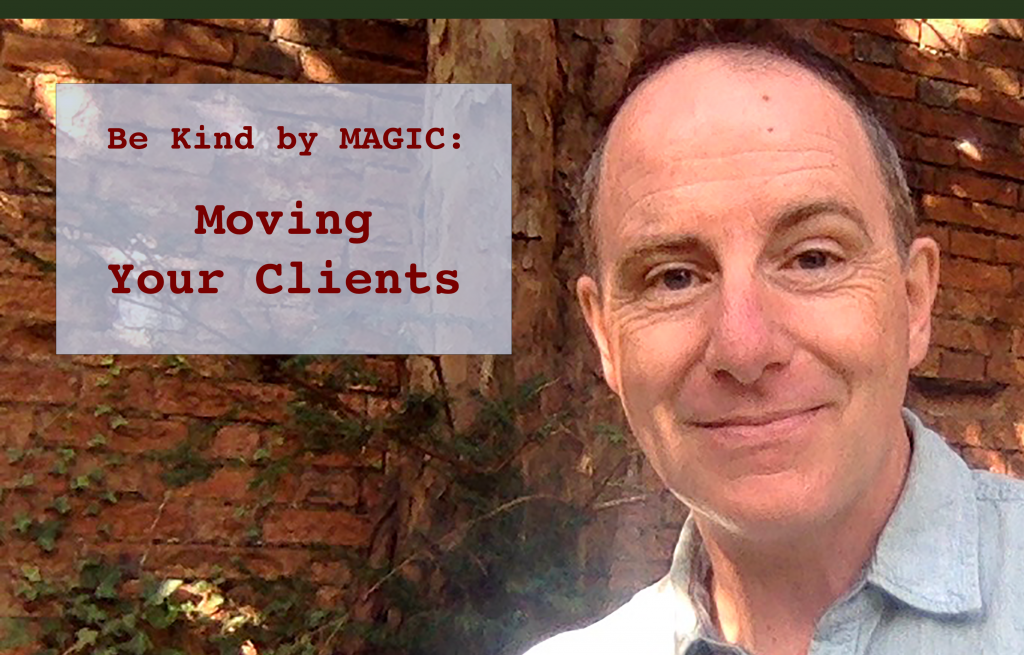
Being Kind is your business super-power.
How do you Be Kind in Business? By applying the MAGIC formula:
Moving
Attuning
Giving
Inspiring
Connecting
It applies to:
Yourself
Your clients
Your team
Your prospects
—
Connecting with clients.
Connecting is at the end of my MAGIC acronym. But that is just because it is the last letter in the word magic! It could come first, but the spelling would be wrong.
Connecting affects all the other aspects that we have talked about so far. The key to working with clients or anybody else is relationships. And there is no relationship without connection.
I suggest that it will pay dividends for you to reflect on:
- the levels at which are connecting with your clients,
- how often you are connecting with your clients, and
- how you are connecting with your clients.
How Deep?
All of us have relationships at different levels.
Jesus had three friends, Peter, James and John, who were the closest to him. Then he had the circle of 12 apostles and then a wider circle of several hundred disciples.
Each of us will have a small number of close friends and family, then our circle of people we know quite well. And then a much larger number of acquaintances. A lot of these might be Facebook friends or LinkedIn connections.
Imagine concentric circles. In reality, there will be many more than three circles, because you will have a unique level of connection with each person.
At what level are you connecting with your clients?
Obviously, the level of connection with your clients will grow as you get to know them better. It is a good thing to strive for. The more connection you build, the greater the level of trust and the greater the extent to which you will be able to help them.
You can be intentional about deepening your connections.
How to Win Friends…
Dale Carnegie’s seminal book “How to Win Friends and Influence People” (#ad) is brilliant on this. If you haven’t read it, make it the next book you read. I left it for far too long before I read it, just because I thought the title sounded manipulative. I was missing out on gold.
Carnegie makes the powerful observation that people that love talking about themselves – it is always their favourite subject!
Make a habit of regularly asking your clients questions about themselves. Make sure you remember what they say for next time. Take notes if necessary. I use Evernote.
The most comfortable place to build connections is around things that you have in common, perhaps interests or hobbies, maybe aspects of your work, possibly shared likes and dislikes. You might also have shared connections and friends.
But you can also ask them about non-shared stuff. Unusual hobbies they have that you don’t, but you can show an interest. Alternatively, exciting pieces of work they have done that you can ask them about.
Taboo Subjects?
Other subjects can enter in as your relationship grows. Some of them will require a sensitive and gradual approach. For example, asking about family. But, if they bring it up first and mention their partner, children, etc. then you can refer back to them later.
Other topics might be spirituality and religion. For some, this is a complete no-no, but for others, it will deepen the connection markedly. You might find you have to talk in “code” for a bit to establish that you’re on the same page.
Similarly, with politics, some people love talking about it, others don’t. It can either strengthen your connection or divide you. You may think it’s not worth the risk and that it is best to avoid this altogether but, again, in some cases, it could really strengthen your bond.
Too Much, Too Little? Find the Goldilocks Frequency
Think about how often you are connecting with your clients. What frequency is appropriate? You don’t want to annoy them and pester them, but you also want them to know that you haven’t forgotten them.
It’s finding a balance – not too often, not too little.
And How?
Think about the ways that you are connecting. What is the most appropriate method for each time you connect?
You will probably discover that each client has a favoured method of connection. Even so, there will be times when you use a different channel, depending on what you are trying to communicate.
Think about the most appropriate way of connecting with your clients on each occasion – a phone call, Zoom call, email, face to face meeting, social media message, etc.
Connect and Build
Every time you physically or virtually connect with your clients, make sure you establish an emotional connection as well. Aim to build your relationship with them a little further.
Connecting is key.
—
Download my free eBook “Be Kind to Yourself” and learn how to:
- Adapt to new ways of working
- Harness the power of habits
- Optimise the use of space in your home
- Use clothes to boost productivity
- Focus on what matters
- Plan for the future amidst uncertainty




